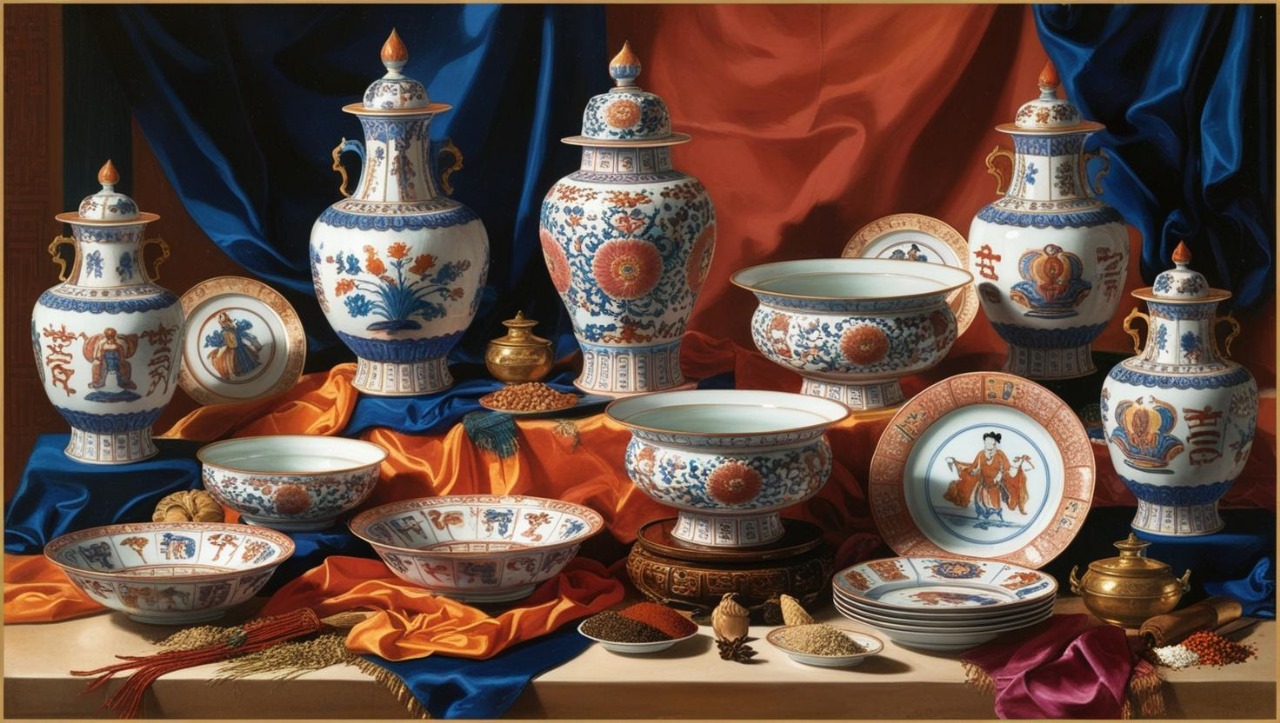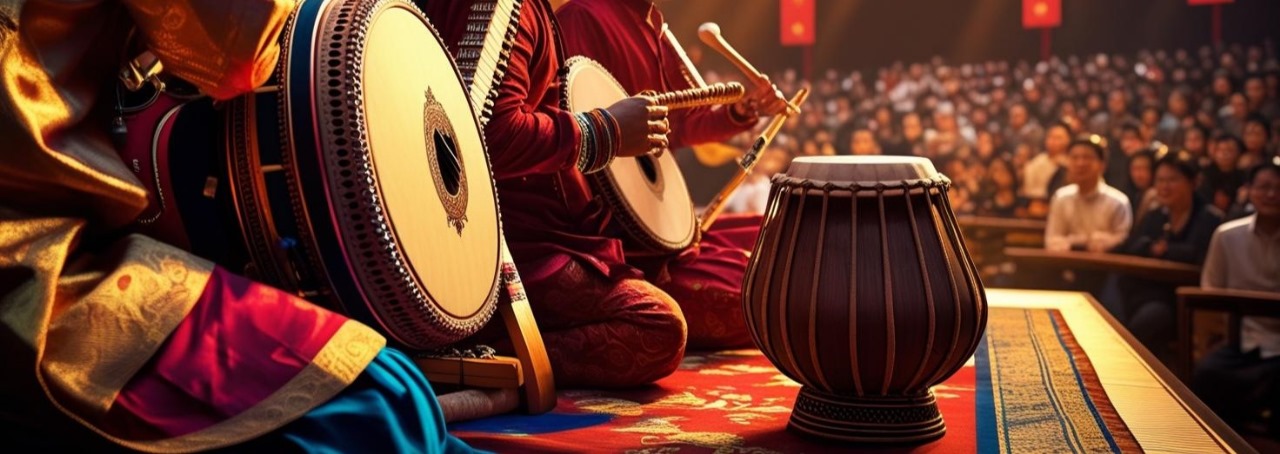Porcelain is a refined white ceramic that captures the rich historical interactions between India and China, and its widespread discovery in archaeological sites around the world attests to its prominence in Indian Ocean trade. Shards of Chinese porcelain have been found on coasts as well as deep inland in countries across the Indian Ocean Region, like Thailand, Philippines, Egypt, Sri Lanka and India. Known for its elegant and artistic decorations and prized by elites and royals around the world, Chinese porcelain was traded and exported for several centuries along the overland and maritime silk road. Beginning from the 6th Century AD, and until the gradual decline of Chinese porcelain in the 16th century, porcelain has featured as a prominent object of trade and cultural exchange between India and China. But its contemporary role in India-China bilateral trade has diminished, weighed down by the frictions emanating from trade relations, and fails to reflect its historical glory and significance.
Colorful Beginnings
Historians generally agree that the production of porcelain dates back to the Tang Dynasty, which flourished from 618 to 906 CE. China’s porcelain trade with India involved the ports of Quanzhou and Guangzhou. These port cities were bustling with activity, a hub for traders from Samarkand, Meymaneh, Kish, and Bukhara, as well as India. They brought with them not just goods for trade, but also their cultures, philosophies, and technologies. This exchange of ideas and goods led to a vibrant and diverse cultural milieu in the Tang Dynasty. But the export of porcelain took off in large quantities during the Song dynasty, with Hangzhou and Ningbo also emerging as major ports of export.
By the time of the Ming dynasty, Chinese porcelain trade became strictly controlled and its importance to the Chinese imperial court increased significantly. Porcelain was already being exported to various parts of Asia and Europe. For instance, in the year 1339, Chinese traveller Wang Dayun wrote a book titled, “A Brief History of Island Countries”, in which he mentions that the Indian subcontinent saw substantial commerce in Chinese porcelain throughout the Yuan period. The period of the Ming and Qing dynasty became known as the “Age of Porcelain” for facilitating rich exchanges, advances in ceramic production, which included an invitation to European artisans by the Kangxi emperor to visit the palace workshops in Beijing. Much like foreign artists, Indian art forms and styles were influencing Chinese ceramic production and art as well.
Porcelain in Medieval India
Chinese ceramics were produced for the imperial court, the home market, and export. Its export from China to India occurred via the Silk Road (land route) and the Maritime Spice Route. This trade began around the 10th century CE and continued until the 18th and 19th century CE. Porcelain was highly favoured among Indian royals and wealthy individuals, making it an important trade item. Demand was widespread among various kingdoms and rulers due to its beauty, exclusivity, and utility. For example, the Moroccan explorer Muhammad Ibn Battuta offers a detailed account of his journeys to over a hundred locations in India, South Asia, Southeast Asia, and Africa, attesting to the widespread availability of porcelain during this period. Sources also reveal that there was widespread use of porcelain pottery by the Mughal emperors, indicating a high demand for it in urban centres such as Agra, Fatehpur Sikri, Delhi, Lahore, and Hampi.
Yuan Period Porcelain Plate from Jingdezhen found in India
Source: Aparjita Sharma & American Institute of Indian Studies
Literary evidence from the Mughal period, including Babur's Memoirs, Ain I Akbari, and Tuzuk I Jahangiri, illustrates the significance of Chinese porcelain in India. The use of porcelain by Akbar for meals and the exchange of Chinese porcelain as gifts by Jahangir further emphasizes its importance in medieval India. Additionally, there are historical accounts of the porcelain trade in other regions such as Persia. This information collectively indicates that the porcelain trade was a significant part of economic and cultural exchange during medieval India, reflecting the influence of Chinese pottery on the region's economy and society.
Porcelain Trade after 1800
By the early 1800s, European markets had developed a fascination for Chinese porcelain. As a result, mercantile communities played a major role in bringing Chinese porcelain to Europe and even India. Parsee traders bought Chinese tea, porcelain and silk in exchange for Indian cotton, opium, and spices in the ports of Canton (Guangdong), Hong Kong, Macau, and Shanghai. They brought back porcelain objects like plates and vases, sold in places like the Thirteen Factories in Canton, which catered to the commercial needs of foreign traders. Following the widespread acceptance of porcelain, more Parsis started to acquire these pieces, leading to the development of sizable Chinese porcelain collections among Parsi families in Bombay. Several Parsi families were involved in the trade of porcelain with China. Some of the prominent Parsi families engaged in this trade included: the Wadias, Jijibhais, Banajis and Readymoneys.
Early Chinese Porcelain Found in Hyderabad
Source: bidamount.com
The knowledge of India’s porcelain trade with China only came to light after significant discoveries of ceramic shards starting in the 1950s, with the discovery of seventy Chinese celadon and blue-and-white dishes and bowls, from the Yuan period, at the palace of Firuz Shah Tughlaq in Delhi. Subsequently, discoveries of white porcelain shards in Tamil Nadu and complete pieces at the Golkonda Fort in Telangana attested to the widespread use of Chinese porcelain in India. The expanse of archaeological evidence suggests that porcelain was a significant component of trade relations between kingdoms in India and the Chinese imperial court.
Contemporary Trade of Porcelain
Historical exchange of porcelain has given way to contemporary trade relations between India and China that take on a different hue. Much like the historic practice of importing porcelain from China, India has continued to import porcelain from China. The United Nations COMTRADE database on international trade states that India's imports from China of ceramic products including porcelain were USD 487 million in 2023. Although historic trade of porcelain is a significant facet of the civilizational exchanges between India and China, contemporary imports of porcelain from China have created challenges and hurdles to the exchange and trade of this culturally significant product.
Over 240 Indian manufacturers of ceramic wares and tiles have raised concerns about the potential impact of Chinese dumping of ceramics like porcelain on Indian Micro, Small, and Medium Enterprises (MSMEs). This kind of trade friction underscores the complexities of ceramic and porcelain trade between India and China. To counter this, the Indian government furthered for three months, the anti-dumping duty on porcelain and vitrified tiles imported from China to safeguard the country's ceramic and porcelain industry, especially micro, small, and medium-sized businesses (MSMEs). The five-year tariff was first imposed in 2016 and was scheduled to expire on March 28, 2021. However, the rule was extended as a protective measure aimed at preserving the competitiveness of Indian MSMEs and maintaining a level playing field against unfair trade practices. With the anti-dumping duty extended for another five years as a result of continued dumping from China, imports of ceramics and porcelain from China remain depressed.
In conclusion, historical porcelain trade between India and China, dating back to ancient times, has not only been a cornerstone of economic exchange but has also featured prominently in political exchanges of kings and elites in India and China. From the cosmopolitanism of the Tang Dynasty to the modern-day trade ties, porcelain has played a significant role in shaping bilateral relations. However, recent concerns about unfair trade practices, particularly Chinese dumping impacting Indian MSMEs, highlight the complexities in contemporary trade dynamics. The extension of anti-dumping measures underscores India's commitment to safeguarding its domestic ceramic and porcelain industry while maintaining a balanced and mutually beneficial trade relationship with China. The potential for cultural and artistic collaboration over porcelain and ceramics is an opportunity to expand India-China cultural engagements via an important trade channel.



.jpg)

